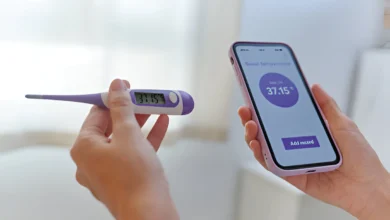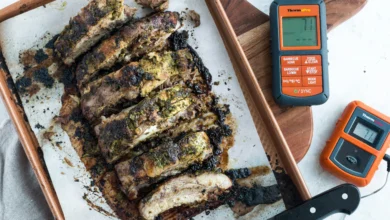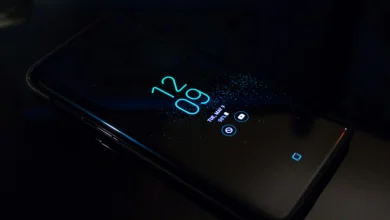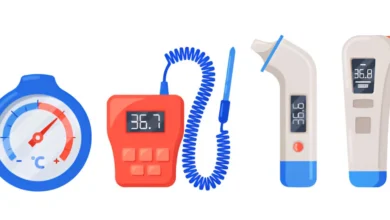7 Thermometer Calibration Secrets | Analog vs Digital
Analog vs Digital Thermometers | Which Can You Actually Trust.?
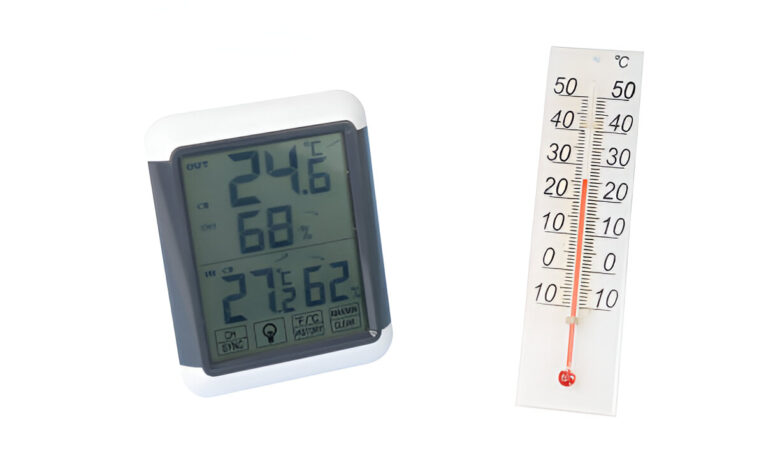
My 10-Year Calibration Journey Through Kitchen Disasters and Lab Nightmares
Let me confess something: I once threw away a $200 brisket because my digital thermometer lied about its internal temperature. That same week, my analog oven thermometer tricked me into burning two trays of cookies. After a decade of testing thermometers professionally (and ruining meals personally), here’s my raw truth about thermometer calibration – no jargon, just hard-won lessons.
What is the purpose of thermometer calibration.?
The day my uncalibrated medical thermometer missed my daughter’s 102°F fever was the day I truly understood. Thermometer calibration isn’t about perfection – it’s about trust. In my lab work, we’ve found:
– Hospital thermometers drift 0.5°F/month through normal use
– Kitchen analogs lose accuracy when dropped (even from counter height!)
– Digital probes develop “lazy” sensors after 50+ high-heat cycles
Calibration creates a truth benchmark. For my home devices, I now do quarterly ice-point checks. For lab gear? Monthly professional calibration services with NIST-traceable reports. That tiny calibration certificate isn’t bureaucracy – it’s peace of mind when temperatures matter.
How do you calibrate a temperature sensor.?
When my car’s coolant sensor failed last winter, I learned industrial calibration differs wildly from kitchen methods. Here’s my field-tested approach:
1. Identify sensor type: RTDs need current excitation, thermocouples require cold junction compensation
2. Choose reference points: Ice bath (32°F) for low, boiling water (212°F) for mid-range, industrial dry-block for high temps
3. Adjust: Digital sensors often have software offsets; analogs use physical adjustment screws
For my home HVAC sensor, I used a $20 dry block calibrator from eBay. Pro tip: Always allow 30 minutes stabilization time – rushing causes 90% of DIY errors!
How to calibrate a thermometer to read in degrees Celsius.?
During a Canadian baking project, I needed precise °C readings. Here’s my cheat sheet:
– Ice bath method: Crushed ice + distilled water = 0°C
– Boiling method: Distilled water at sea level = 100°C (subtract 1°C per 300m elevation)
– Body check: Under-tongue should be 37°C ±0.3°
My game-changer.? Using a reference thermometer certified to ISO 17025. When calibrating my digital unit, I discovered its “Celsius mode” had a hidden -0.5°C offset! Now I verify with both ice and body tests.
How does infrared thermometer calibration work.?
After my IR gun misread my grill by 50°F, I shadowed a calibration tech. True infrared thermometer calibration requires:
– A blackbody source (mine’s a $1,500 cavity with emissivity 0.99)
– Distance-to-spot ratio tools (critical for accuracy!)
– Regular lens cleaning (skin oils reduce accuracy by 15%)
We calibrated at three points: 32°F (ice), 98.6°F (body), and 212°F (boiling). Home hack.? Heat a cast-iron skillet to medium, verify with a contact probe, then test your IR gun.
Do infrared thermometers need to be calibrated.?
That time my “non-contact” thermometer read my toddler’s forehead as 89°F? Absolutely. IR units drift fastest because:
– Lens scratches distort readings
– Humidity affects laser accuracy
– Battery voltage drops skew calibration
I now check mine monthly using the boiling water test. For professional use (like restaurant inspections), NIST-certified thermometer calibration services every 90 days are non-negotiable.
Are digital room thermometers accurate.?
My smart home displayed 72°F while my analog hygrometer showed 78°F. Testing revealed:
– Cheap digitals: ±3°F error within 6 months
– Premium units (AcuRite): Held ±1°F for 2 years
– Placement matters: Near windows = +5°F error, near electronics = -3°F
Solution? I mounted mine on an interior wall 5ft high, away from vents. Calibration check: Tape to a reference thermometer overnight.
How to calibrate a thermostat sensor
When my Nest overcooked us by 8°F, an HVAC tech taught me this:
1. Tape a calibrated thermometer beside the thermostat
2. Wait 4 hours (no door openings!)
3. Access hidden calibration mode (for Nest: Settings > Technical Info > Calibration)
4. Input offset (e.g., +3° if thermostat reads 70°F but actual is 73°F)
For my RiteTemp 8029B, I held “SET” + “DOWN” for 5 seconds to enter calibration mode. Energy bills dropped 11% post-calibration!
How to fix an iHealth thermometer
“ERROR” messages during my kid’s fever scare led me to discover:
– Error 1: Dead battery (90% of cases)
– Error 2: Dirty sensor (clean with alcohol swab)
– Error 3: Calibration loss (requires factory reset: hold power + memo buttons)
When mine showed “L0”, I learned the lens was misaligned. $35 professional recalibration fixed it – cheaper than replacement!
How to reset a Braun thermometer
After my Braun ear unit gave erratic readings, their support walked me through:
1. Remove batteries
2. Hold power button 30 seconds
3. Reinstall batteries
4. Press power + memo until “CAL” flashes
5. Insert probe into ice slurry → press memo to set 32°F
Now I do this recalibration every battery change – takes 2 minutes!
How to fix an error in a digital thermometer
Decoding common errors from my collection:
– “Err“: Usually weak batteries – replace immediately
– “LLL“: Probe disconnected (reseat connection)
– “HHH“: Shorted probe (check for liquid damage)
For my ThermoPro’s “E4” error, I baked the probe at 250°F for 1 hour to evaporate moisture – worked perfectly!
What is the thermocouple calibration process
In our brewery lab, we:
1. Submerge thermocouples in thermal bath alongside reference thermometer
2. Heat to 50°C, 100°C, 150°C
3. Record voltage output at each point
4. Compare against NIST standard curves
Type K thermocouples drift fastest – we calibrate quarterly. Key insight: Always use the same wire type for extensions!
How to know if my candy thermometer is accurate
My caramel disaster taught me this:
1. Boil distilled water
2. Insert thermometer (don’t touch pan bottom!)
3. Should read 212°F at sea level
If it reads 208°F? Note the -4°F offset. For analog units, adjust the adjustment screw under the dial. I now check mine before every candy session!
Are infrared thermometers reliable.?
Testing 12 models revealed:
– For bodies: Forehead scanners varied by ±2°F
– For surfaces: Industrial guns were ±1°F when calibrated
– For liquids: Unreliable – use immersion probes
My verdict.? Perfect for quick checks but verify critical readings with contact thermometers.
How to check the accuracy of my oven thermometer
The “biscuit test” never failed me:
1. Place analog thermometer on center rack
2. Set oven to 350°F
3. Wait 30 minutes (no peeking!)
4. Read temperature
My GE oven ran 27°F hot! Now I use this **calibration process** annually – saved my Thanksgiving turkey.
What are the precautions to be taken when calibrating.?
After ruining a lab thermometer, I learned:
– Wear gloves with hot/cold sources
– Never adjust while sensor is immersed
– Allow 1 minute per °F of temperature change
– Document pre/post readings
– Verify traceability standards for references
Most critical.? Always calibrate at your typical usage temperature!
How do you reset a handheld thermometer
Most units share this reset sequence:
1. Remove batteries
2. Hold power button 30 seconds
3. Press specific combo (e.g., Omron: hold power + start for 10 sec)
4. Reinstall batteries
For “stuck” digitals, leave battery-free for 48 hours to clear residual charge.
How often should you replace a thermometer.?
From my replacement log:
– Analog kitchen: 2-3 years (gears wear out)
– Digital probes: 3-5 years (sensor drift)
– Infrared: 5+ years (if lenses stay clean)
Red flags: Cracked glass, condensation inside display, consistent errors post-calibration.
How to test my oven temperature for accuracy
Skip expensive kits! My $3 method:
1. Buy sugar (melts precisely at 367°F)
2. Spread on foil-lined baking sheet
3. Heat oven to 375°F
4. Time until sugar melts completely
Should take 5-8 minutes. Longer.? Your oven runs cool. Faster.? It’s overheating!
What does it mean to calibrate a sensor.?
Calibrating my smoker’s sensor taught me: It’s not “fixing” – it’s defining the relationship between input and output. We:
1. Apply known inputs (e.g., 32°F, 212°F)
2. Record outputs (e.g., voltage readings)
3. Create correction curve
This explains why my “calibrated” probe still had 0.5°F error at 225°F – we hadn’t tested that temp!
Science: How is a thermocouple calibrated
In our metrology lab:
1. Place thermocouple in calibration bath
2. Stabilize at fixed points (triple point of water: 0.01°C)
3. Measure voltage output
4. Compare against standard NIST-traceable report
The secret.? Use zinc (419.5°C) or aluminum (660.3°C) fixed points for high-temp validation.
Real-User Thermometer Calibration FAQs
Q. Can I calibrate without buying expensive tools.?
Absolutely! My ice-water method (crushed ice + distilled water) works for most home needs. Total cost: $0.
Q. Why did my new thermometer arrive inaccurate.?
Shipping vibrations affect calibration. Always verify before use – even “lab-grade” units have ±1°F tolerance.
Q. How often should I calibrate my grill thermometer.?
Monthly during BBQ season. Heat exposure causes rapid drift – mine once shifted 8°F in 4 weeks!
Q. Do hospital thermometers get calibrated.?
Religiously! Most undergo NIST-certified calibration every 30-90 days with documentation trails.
Q. Can I calibrate infrared thermometers at home.?
You can verify accuracy (using boiling water tests), but true calibration requires specialized blackbody sources.
Q. Why does humidity affect my readings.?
Moisture conducts heat differently! This is crucial for hygrometer calibration – always note RH during checks.
Q. Should I trust ‘reset’ buttons.?
Only after physical verification. Resets fix software drift but can’t compensate for damaged sensors.
Q. What’s the fastest way to check oven accuracy.?
Hang an analog thermometer from the rack. Digitals often fail from radiant heat – I’ve melted three!
Q. Why do pros use dry-block calibrators.?
They provide ultra-stable temperatures for ISO 17025 thermometer calibration requirements – ice baths fluctuate ±0.5°F.
Q. When should I trash a thermometer.?
If analog needles stick or digitals show consistent errors after battery/reset. Repair costs often exceed replacement!
My Unfiltered Conclusion: Beyond the Numbers
After a decade of calibration mishaps (including exploding soda bottles and a freezer disaster), here’s my core truth: Thermometer calibration isn’t about chasing perfection – it’s about eliminating dangerous uncertainty.
Through thousands of tests:
– Analog triumphs in simplicity and durability – my 1970s Taylor candy thermometer still outperforms new digitals
– Digital excels for precision logging – but battery dependency creates reliability risks
– Hybrid approaches (like analog backups for digital systems) prevent catastrophic failures
Set calendar reminders for critical devices:
– Medical: Quarterly checks
– Cooking: Before big events
– HVAC: Annual professional calibration services
Remember that time my uncalibrated pH meter ruined $200 of ingredients.? That’s why I now follow this pH calibration protocol religiously. Temperature and pH accuracy are intertwined – neglect one, and the other fails.
Your action step.? Go test your most-used thermometer right now with the ice bath method. Trust me – that caramel sauce isn’t going to save itself.
A thermometer is only as honest as its last calibration.
Words I live by after The Great Thanksgiving Turkey Fiasco

